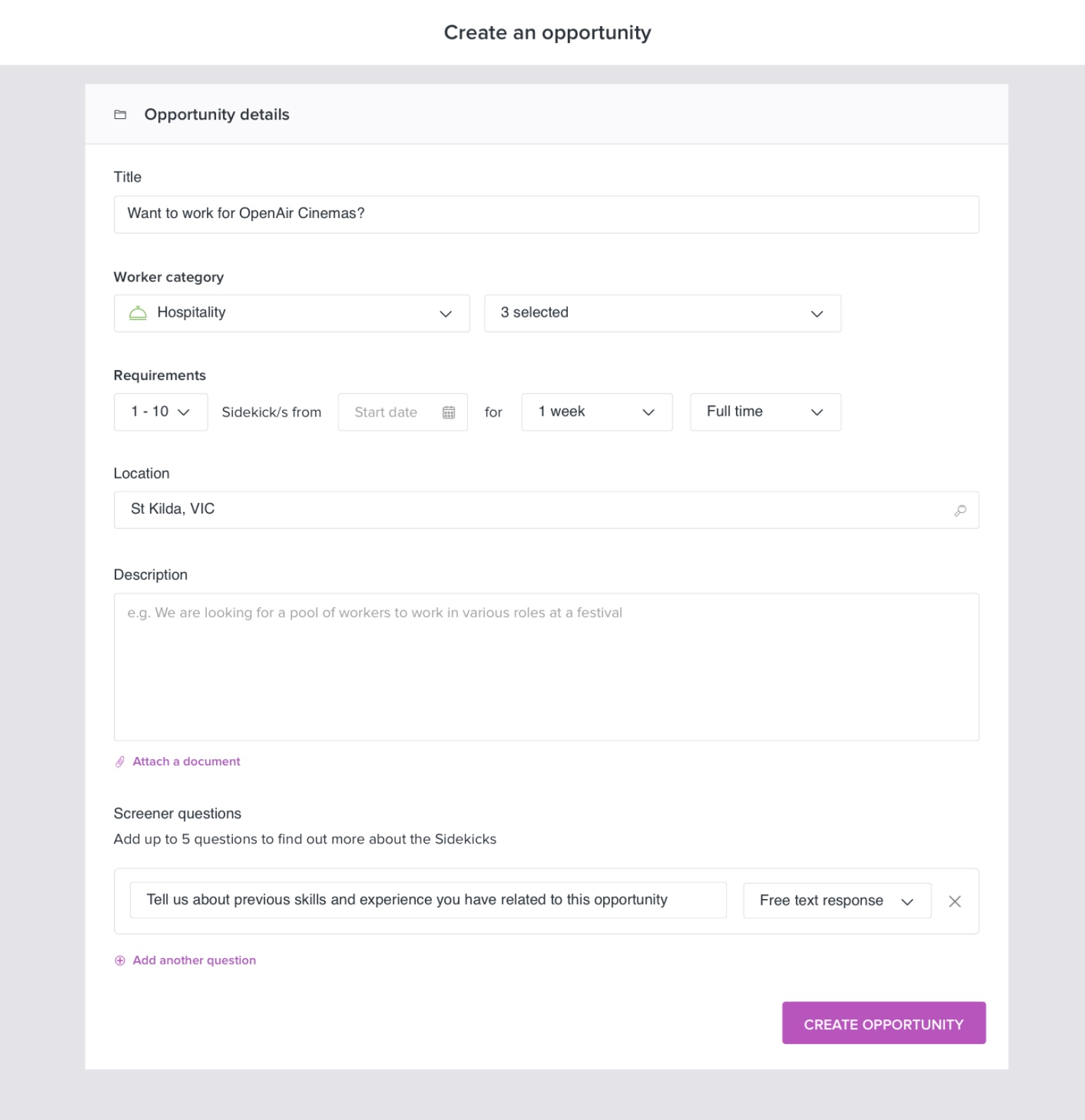Data Driven Design
USER EXPERIENCE · PRODUCT DESIGN
Sidekicker is a casual and temporary staffing marketplace platform. Businesses would post jobs and pre-screened, skilled workers would apply, be selected, be paid, and rated via the platform.
This case study involves validating our direction with the right data. Allowing the data to tell stories along the way, informing a more targeted solution.
The Problem
Demand was increasing for more than just 'on-demand' labour. Employers were looking to be able to find someone for an ongoing period of time rather than one-off. Because they needed staff for a longer period, there was a need for more in-depth vetting.
Our Approach
In addition to our usual UX processes. We sought to validate the problem by delving deep into the data that we had. We wanted to understand where this need was coming from.
Analysis
I found a sample group of jobs for each category that we had and read through the job titles to try to identify what they were asking for. In doing this, we discovered two main insights:
- Actual demand for these 'Ongoing' jobs were pretty much largely in Business Admin.
- Other 'Ongoing' jobs posted by other categories were mostly jobs that could have been posted as regular jobs but were posted incorrectly as an 'Ongoing' job (due to some limitations in the technology)

Solutions
We presented the following problem statements to stakeholders to help them to make a decision on which problems we wanted to solve. I mapped the journey of a hirer and highlighted opportunities for the product to do better for them along the way.


"Opportunities"
Based on what we now knew, we started to build a vision flow that would allow Employers to do the following:
- build a shortlist of candidates
- pre-screen candidates with a set of screening questions
- create a pool of already screened workers that they could dip into whenever work came up
Our solution looks something like the screenshot below. We created a new type of job called an 'Opportunity' instead of a one-off shift:
- Workers would apply to the opportunity
- If successful, Workers would be added to a 'Talent Pool'
- When the job comes up, Employers would post the actual shift out to the Talent Pool of already screened workers.
